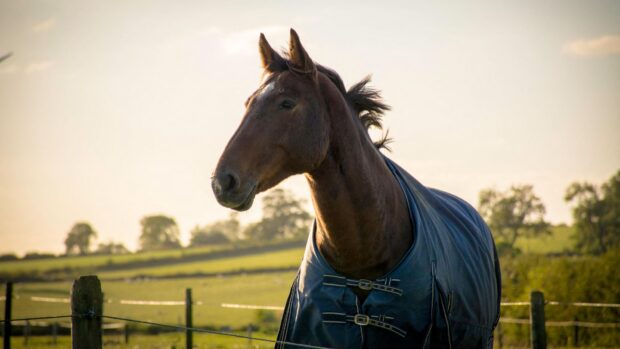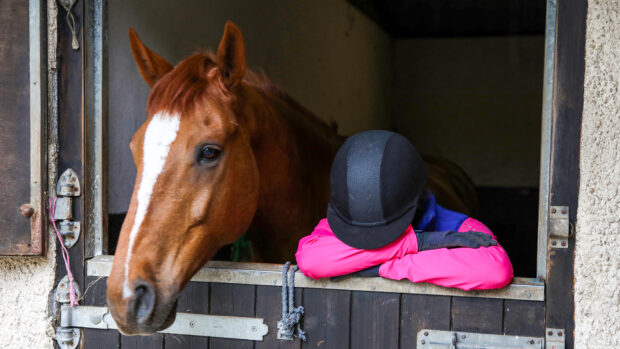The ArcEquine Unit, a small device that attaches to the horse’s leg using an elasticated strap, uses microcurrent therapy to promote repair and healing in the body.
“We’ve used ArcEquine Units for a long time on our top horses,” says four-star eventer Liz Halliday. “My vet recommended it to me about four years ago, and now we use it as part of the daily routine to help maintain them.”
“I’ve used microcurrent therapy on myself and I’m a big believer in new technologies,” adds Liz. “The way it helps heal injuries is proof that it works — horses don’t lie! Two years ago, a horse of mine had bone oedema in his hind pastern. He had an MRI scan and I was told by the vet categorically that it would never heal in less than six months. I used ArcEquine on him and, after four and a half months, he was sound again.”
How does it work?
Ian Thirkell, founder and managing director of ArcEquine, explains: “All of the cells within the body use tiny sequences of electric current to monitor and regulate a stable state. When there is injury, damage or disease to a tissue, these sequences don’t work correctly. The ArcEquine Unit reboots the body. By introducing the correct sequences of electrical current, any imbalances — electrical or chemical — are rebalanced.”
The ArcEquine Unit uses two different sequences of electrical current — one to treat trauma, and one to promote repair — and come with four pre-set treatment options depending on what you want to achieve. Each treatment option involves attaching the unit to the horse’s leg every day for a period of three hours — usually for around six weeks. Ian advises avoiding putting the unit on an injured leg or wound, but rotating it around healthy legs.
“The current kickstarts regeneration and repair, and works systemically at cellular level so all tissues respond to it,” he says. “It’s fast, versatile, and can be used consistently for any physical or psychological trauma. This encompasses repair to all tissue, for pain, stress and general wellbeing. It’s ‘natural technology’, and you cannot misuse or overuse it. It is equally as effective at prevention and maintenance as it is at restoration.”
Which top riders are using it?
When ArcEquine launched in 2012, a number of top riders, including Liz, Jonathan Chapman, Francis Whittingdon and Lucinda Fredericks, assisted with the development of the units by helping to streamline design. They are now sponsored by ArcEquine. “I’ve used microcurrent therapy on myself after several accidents with broken bones, and I have seen the benefits directly with recovery times halved,” says Lucinda. “ArcEquine is a very simple, effective device to use.”
Howard Newitt, partner at Milbourn Equine Vets, has used ArcEquine Units on horses with muscular back pain — in conjunction with physiotherapy — with helpful results, as well as overseeing clients who use the units on tendon and ligament injuries.
“In some cases, the speed of tendon healing appeared to be faster than anticipated, and in others, there was a greater improvement in the fibre pattern on ultrasound scans than expected,” he says. “However, some showed little improvement and the reasons for the disparity are not clear to me.”
Are there any cons?
It is worth noting that, although there are many success stories behind microcurrent therapy, it is very difficult to scientifically qualify the impact of the ArcEquine Units.
“Several clients have used the ArcEquine Units during recovery and rehabilitation from tendon and ligament injuries, and some swear by it as routine maintenance,” says Kate Granshaw, partner and full-time vet at Lingfield Equine Vets. “However, it’s very hard to know if it has made a difference to those cases as there are no controls.”
Like this? You might also enjoy reading these:
Suspensory ligament injuries: what owners need to know
9 therapeutic rugs your horse will thank you for
Howard agrees: “From a scientific viewpoint, I am not aware of any clinical trials which have compared the effectiveness of ArcEquine with other treatments, which would be the ideal way to help vets decide the most appropriate treatment to use. As a result a lot of the evidence behind ArcEquine is anecdotal — you cannot be sure how well the injury would have healed without it.”



